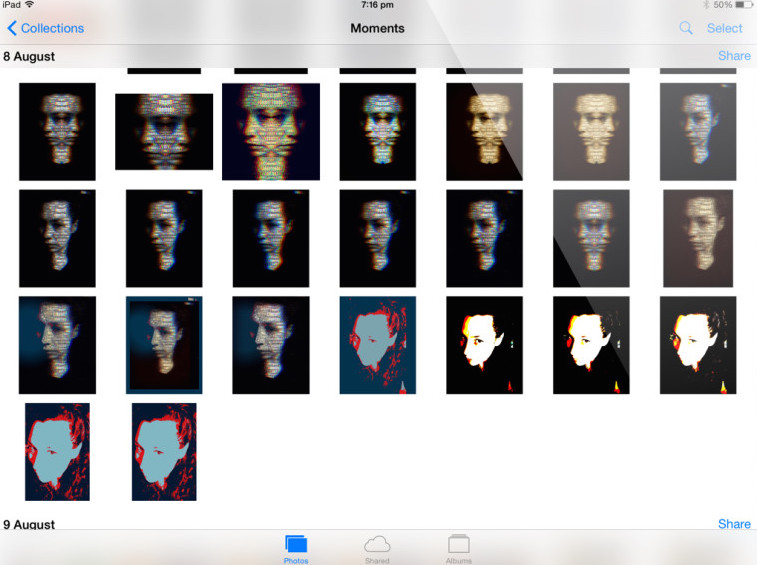Interview with Cathy Hunt: Power of the camera
 Bart Buckinx —
Bart Buckinx —
Extract from the BookWidgets interview series
This is an interview with Cathy Hunt on how to use a camera in your lessons. It comes from a series of interviews with experienced teachers and educators from around the world sharing their passion and experiences with mobile learning.
These interviews are also published in 'Learning Materials for Mobile Devices' an essential guide to help as you begin to explore, choose, and integrate learning materials for mobile devices into your classroom. It's free to download from our website.
about CATHY HUNT
Cathy Hunt is an experienced teacher, artist and education consultant. Her work is driven by a belief in the importance of an arts education that promotes 'making' as a vehicle for empowering students with an understanding of their own creativity. Cathy sees technology as an integral tool in this area.
Her website iPadartroom.com has become an award-winning, home base for educators to share and engage with innovative ideas, resources and technology for learning in a art room that combines paint and pixels.
Cathy also works with a variety of major institutions and regional galleries across Australia in their public arts events, professional development and education programs for children, teachers and artists.
Question: How do you start your workflow for integrating materials into a lesson?
Answer: One of the ways I look at materials is to look at what the kids are using on their own and I ask a lot of questions. One of the biggest entry points for art making for me is the builtin camera. Combining the idea that I want to use the camera, as a lens upon the world and the idea that they use a lot of photography in their daily lives, is not just for leveraging the technology. It is also for art making and getting them to see the difference between what they are doing when they take a snapshot and when they make an image that has a communicative purpose.
"I love to break down that paradigm that people have about devices being individual and not collaborative”
Question: Should someone who starts with a mobile device explore the power of the camera first?
Answer: This is such a visual world now for our students. It’s a media saturated world, but also one in which they have to contribute. The time where resumes are written up in Microsoft Word is passed. Students who are in middle school now, will need to have portfolio’s with a video application. That requires them to understand the visual language to tell their story in a moving, visual manner. So I think this is important for all subject areas. Some of these kids are taking hundreds of photos a day. When you look at their camera roll it’s quite impressive how poorly they compose these images. It proves that it doesn’t matter how many times you push the button or take the shot, you still need some guidance.
There are a whole lot of principles, which include the elements of art, which actually guide the construction of a quality image. Students and teachers need to be learn that. Combining the camera and these principles is a great way to start.
Question: Could you clarify that with an example?
Anwser: One of the things I do with children and teachers in my lessons is have them turn on the flashlight on their devices. You can actually see how the lighting effects the mood in a face by just moving the angle of lighting. I can make a very dark and angry, almost sinister face or light up a face and make it very friendly. You can do lots of incredible stuff just with the basics of the camera.
Question: Doesn’t that require all students to have a device?
Anwser: I love to break down that paradigm that people have about devices being individual and not collaborative. So I let the students share the devices, move around the room, be the model and photographer, look thru the lens and get feedback from each other. For me that is the whole point of having mobile devices.
I’m always trying to get the kids to see that their devices are tools for creativity, not for consuming media. And at the same time I want to show educators that our students don’t need to be on a one to one platform to be accessing technology. In fact I often share one device between three or four students, because in these kind of activities it benefits them more.
Question: How would you change the point of view then for mobile learning?
Anwser: There is this idea that kids take selfies all the time. A selfie would be a good entry point to break down these paradigms and see each other a bit more clearly. There are definitely those who do, but at the same time there are kids who don’t.
There are some who find it very difficult to use their own image and who still need to produce that same resume video. In that case I want to give them some options. An example of what I use to work on this is with an app like Tellagami. It just gives them that comfortable feeling.
Question: How do you select tools for them then?
Answer: It’s all about meeting students on their own level. So giving kids apps or selecting materials for them is not the right way. They already have these tools, have been using them and exploring them in their own time. Educators should be exploring apps on student devices and using them in their classrooms. It’s a far better way then teachers searching for the right materials.
If teachers feel confident enough to ask the kids, they will offer a solution and even suggest the tool that they are using and feel competent with. Those students will start the conversation in the classroom and support the learning. That helps a lot, especially when all of this is new to you. It frees you up to focus on the learning goals.
Featured lesson:
don't hate the selfie.

“One of the biggest entry points for art making is the build in camera.” - Read more
Question: Do you encourage students to preserve original content? How?
Anwser: I always like to talk about the creative process. When you take photos in the native camera app, then what you are doing in your camera roll is recording every step of what you have explored. Your thinking becomes very visible and visual.
When you take a selfie in a specific app and you use one of the filters, the original image doesn’t necessarily exist. You loose a step. You might have the best position, but you don’t like the filter and without the original, there is no way to change to another filter. Therefore it is very important when you search or create learning materials you always preserve the original.
Question: Would you advice teachers to follow a certain pattern?
Anwser: Linking to the creative process, you are showing students that they can take the original and remix it in whatever way they want. This strategy enables them to use it on any device and for every subject area in school.
You will actually promote their creative confidence with this way of working. They will see that no matter what they are trying to achieve, this is a transferable skill. They can keep moving forward until it doesn’t work anymore for them and then the students can backtrack to the original step.
If you keep the mindset of preservation in the forefront of your pedagogy, it will quickly kick in with students.
“It sounds that there is a lot of thinking behind the simple act of taking a photo,… And there actually should be.”
Question: Does that require a change in mindset?
Anwser: It sounds that there is a lot of thinking behind the simple act of taking a photo,… And there actually should be. As a teacher you know the end goal, but to get there you will let the students play and explore first. The second time will be about reflecting and on other occasions it can be about stepping back and making decisions in that creative process.
At the end of the day it is not about that camera, but it is about developing people who can pick up tools, create with them and to do that they are going to need confidence.
Take aways
1. Combining the camera and the principles of the construction of a quality image is a great way to start.
2. Get the kids to see that their devices are tools for creativity, not for consuming media.
3. Exploring apps on student devices and using them in their classrooms in stead of finding them yourself.


